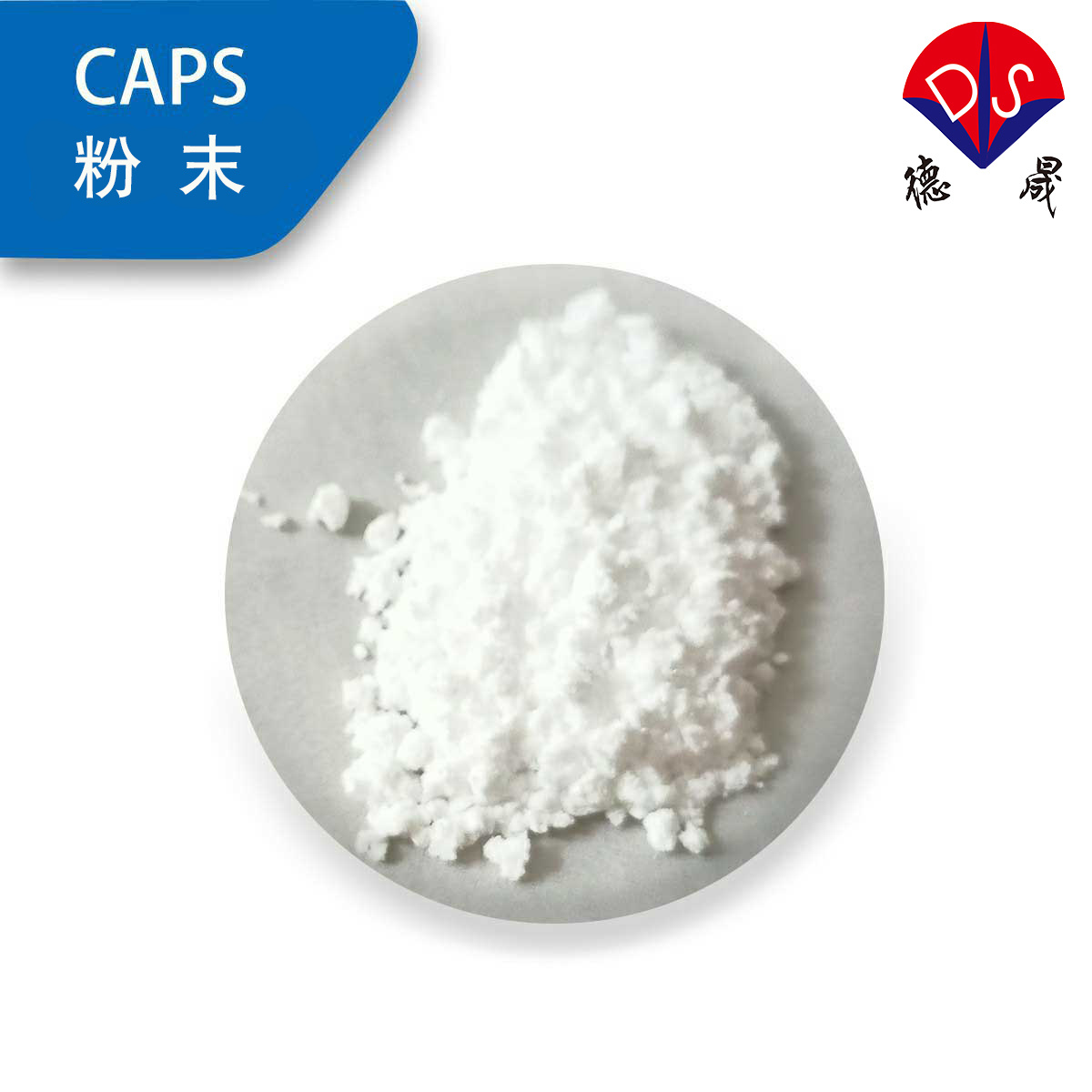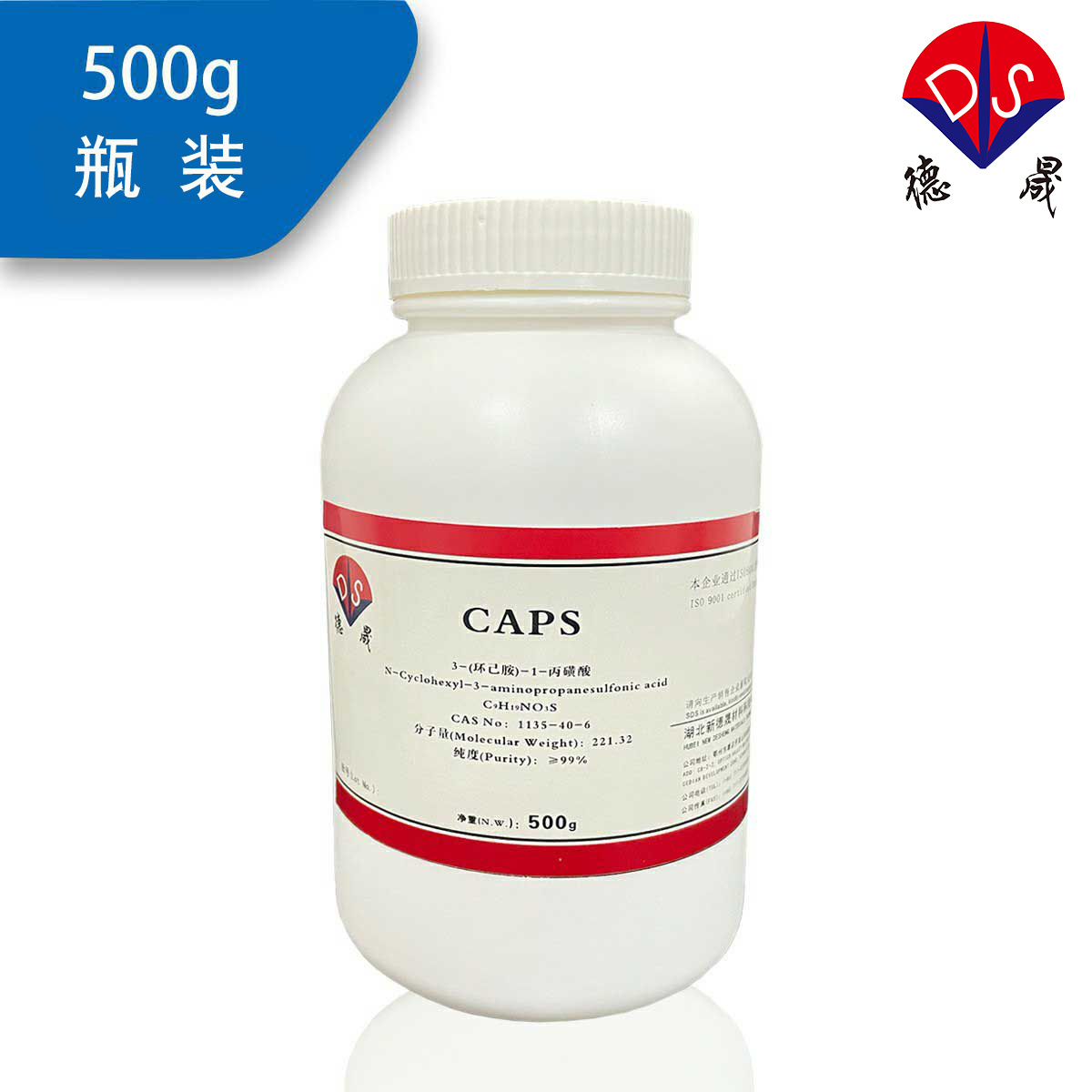CAPS and CHES: Exploring the Similarities and Differences of Two Biological Buffers
Release time:
2025-08-11
In the fields of biochemistry and molecular biology, the selection of buffer solutions has a crucial impact on experimental results. 3-cyclohexylaminepropanesulfonic acid (CAPS buffer) and 2-cyclohexylamineethanesulfonic acid (CHES) are two commonly used zwitterionic buffers, both belonging to the so-called Good's buffer family. Despite their similarities, there are significant differences in chemical structure, pH buffering range, and applications between the two.

CAPS buffer
Similarities: Common Characteristics
1. Both are zwitterionic buffering agents
CAPS and CHES are both zwitterionic buffering agents, which means they can carry both positive and negative charges in solution, enabling them to maintain the pH value of the solution stably within a specific pH range, thereby reducing the influence of external factors on pH.
2. Neither of them complexes with metal ions
Both of these buffering agents do not undergo complexation reactions with metal ions. This characteristic is crucial for avoiding non-specific binding or interference that may occur due to the presence of metal ions, especially in applications sensitive to metal ions such as enzyme activity assays and protein imprinting transfer. Therefore, CAPS and CHES can provide a purer experimental environment to ensure the accuracy of experimental results.
3. All belong to the cyclohexylamine buffer family
CAPS and CHES both contain cyclohexylamine groups, which classify them as members of the cyclohexylamine buffer family. The presence of cyclohexylamine endows these two buffering agents with chemical stability and compatibility, making them suitable for various biochemical applications.
Differences: Differences in Structure and Application
1. Differences in chemical structure
The molecular formula of CAPS is C9H19NO3S, while CHES is C8H17NO3S. Due to its longer carbon chain, CAPS is more alkaline.
2. Different pH buffering ranges
The pKa value of CAPS at 25 ° C is 10.4, and its pH buffer range is between 9.7 and 11.1; In contrast, CHES has a pKa value of 9.5 and a pH buffer range of 8.6 to 10.0. Therefore, when working in a more alkaline environment, CAPS is usually a better choice.
3. Differences in application fields
Due to its unique properties, CAPS is particularly suitable for supporting the activity of enzymes such as alkaline phosphatase and can inhibit the growth of Aeromonas at pH 10.5. In addition, CAPS is also suitable for the determination of quinoline carboxylic acid (BCA), which is crucial for protein quantitative analysis.
In contrast, CHES performs well in specific enzyme reactions due to its protective effect on hepatic alcohol dehydrogenase and ability to enhance phosphodiesterase activity. CHES also inhibits the activity of Fusarium graminearum at pH 9.5, which may be an important consideration in microbial research.
In summary, although CAPS and CHES share many basic attributes, they each have their own strengths in practical applications. Scientists should decide which buffer to use based on specific experimental needs to ensure accurate and reliable experimental results.

Product packaging
The main products of Desheng New Materials, including biological buffering agents CAPS and CHES, are packaged in 25kg cardboard drums. The company deeply understands the importance of product quality and is always committed to providing customers with professional products and services. Desheng New Materials ensures that every batch of products meets or even exceeds customer expectations through a strict quality control system and continuous technological innovation, winning high praise and long-term trust from various industries.
Contact details
Contact number
Address: C8, Guanggu United Science and Technology City, Ezhou City, Hubei Province
Fax:0711-3704 589
Follow us



